On the morning of December 15, 2017, spontaneous protests erupted across Honduras, and the poor neighbourhood of Villanueva in the capital of Tegucigalpa was at the centre of the actions. Protesters, many of them wearing improvised gas masks, had arrived early that morning to establish a barricade of burning tires on the main road that cuts through the neighbourhood. Black smoke hung thick in the air and chants of “Fuera JOH” – “Down with Juan Orlando Hernández” – rang through the streets.
The Honduran National Police and the Honduran military were mobilizing up the road. Every so often, officers wearing gas masks would try to remove the burning tires with a long metal rod, but the protesters would quickly pull the tires back into place. By 9 a.m., the military began to advance on the protesters, shooting tear gas into the crowd, but the protesters held their ground until midday.
Honduras is in a political crisis following the highly contested presidential elections that took place on November 26, 2017. Millions of Hondurans went to the polls, but signs of fraud on the part of the administration of incumbent Juan Orlando Hernández brought thousands to the streets to denounce his illegal second term. Much of the international community, including Canada, has not spoken out against the flawed election process. Canada in particular stands to benefit economically from the return of a government that is resolutely pro-mining and has been accused of grave human rights violations, narco-trafficking, and corruption.
The fraudulent 2017 election is only the latest in the corruption that has defined the post-coup period in Honduras.
Honduras plunged into crisis the night following the election, when preliminary results from the Supreme Electoral Tribunal (TSE) showed the opposition candidate, Salvador Nasralla, a former sports commentator, had a five-point lead over Orlando Hernández. Yet this lead quickly disappeared after an alleged computer glitch delayed counting.
Since that night, Hondurans frustrated with the lack of opportunity and the violence of the Orlando Hernández government have taken to the streets across the country to denounce the fraud.
“[The popular mobilizations] were a spontaneous reaction,” says Bertha Zúñiga Cáceres, an activist with the Civic Council of Popular and Indigenous Organizations of Honduras (Consejo Cívico de Organizaciones Populares e Indígenas de Honduras – COPINH) and the daughter of famed environmental and Indigenous activist Berta Cáceres, who was assassinated in 2016. “There are people [who] are not in the protests now questioning not only the electoral fraud, but also questioning the politics of the government as a result of the situation.”
Faced with the widespread unrest, the administration of Orlando Hernández established a country-wide state of siege, which suspended constitutional rights, briefly enforced a curfew, and deployed the military and police to suppress the protests.
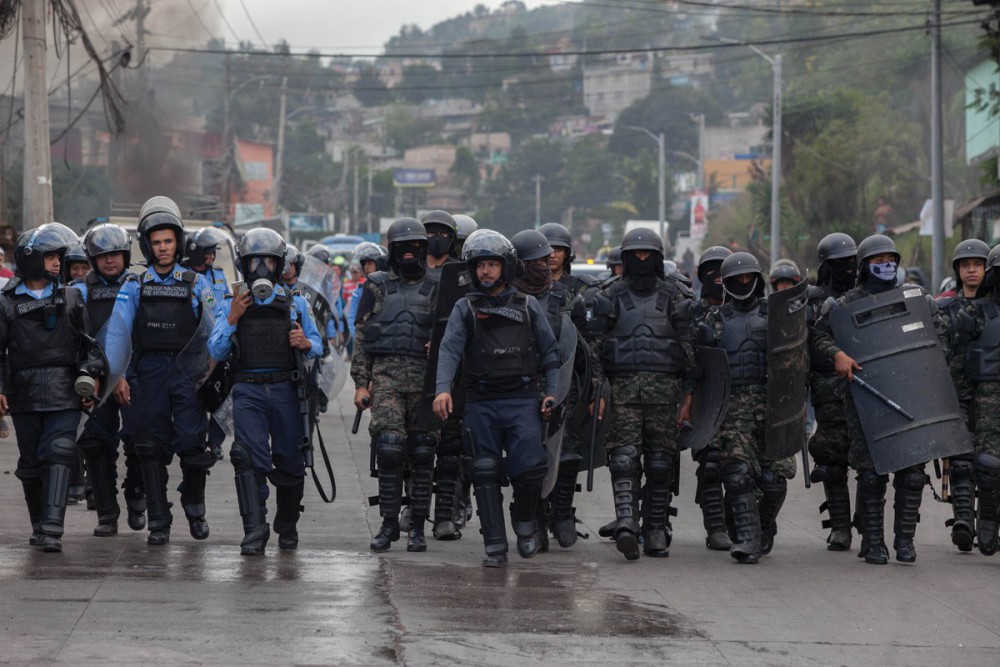
Within the first few hours of the siege, military police and the country’s national police forces killed four people, including a 19-year-old bystander who was at the protest looking for her brother. According to the Committee of Relatives of the Detained and Disappeared in Honduras (Comité de Familiares de Detenidos Desaparecidos en Honduras – COFADEH) security forces had killed 30 people by the end of December.
“The brutality and abuse of force comes from the military police and armed forces, which receive orders directly from the executive power,” Zúñiga Cáceres says. “The electoral fraud is sustained through repression that is intending to generate fear and discourage popular reaction.”
As popular discontent grew, the opposition party, La Alianza de Oposición de Honduras – which brought together the anti-coup parties, left-wing Partido Libertad y Refundación (LIBRE) led by former president Manuel Zelaya; Partido Innovación y Unidad Social Demócrata (PINU-SD); and the centre-right Partido Anticorrupción (PAC) led by Salvador Nasralla – called on the TSE to recount the votes submitted in over 5,000 polling stations. They soon expanded their demand to include a complete recount. Yet on December 17, after weeks of recounting, the TSE announced that Orlando Hernández had won the election by a small fraction. He was inaugurated on January 27, 2018, amid protests.
As Orlando Hernández accepted victory, the Organization of American States’ (OAS) secretary general, Luis Almagro Lemes, issued a statement calling into question the decision.
“Deliberate human intrusions in the computer system, intentional elimination of digital traces, the impossibility of knowing the number of opportunities in which the system was violated, pouches of votes open or lacking votes, the extreme statistical improbability with respect to participation levels within the same department, recently printed ballots and additional irregularities, added to the narrow difference of votes between the two most voted candidates, make it impossible to determine with the necessary certainty the winner,” wrote Almagro Lemes.
The fraudulent 2017 election is only the latest in the corruption that has defined the post-coup period in Honduras.
Who benefits from fraud?
The current crisis in Honduras began nearly nine years ago, when the country’s armed forces carried out a coup d’état on June 28, 2009, against the democratically elected Zelaya, a left-wing president who had the support of many of the country’s labour and social movements.
At the time, the coup was justified by speculations that Zelaya would defy the constitution and seek a second term. He had proposed a national referendum that would test the popular will to change the Honduran constitution’s strict four-year limits on presidential terms. Although Honduran political and human rights analyst Jesus Garza argues there was a popular appetite for the referendum, the Supreme Court ruled it illegal and ordered the military to oust Zelaya. In the violent aftermath of the coup, at least 20 people were killed, according to the country’s truth and reconciliation commission.
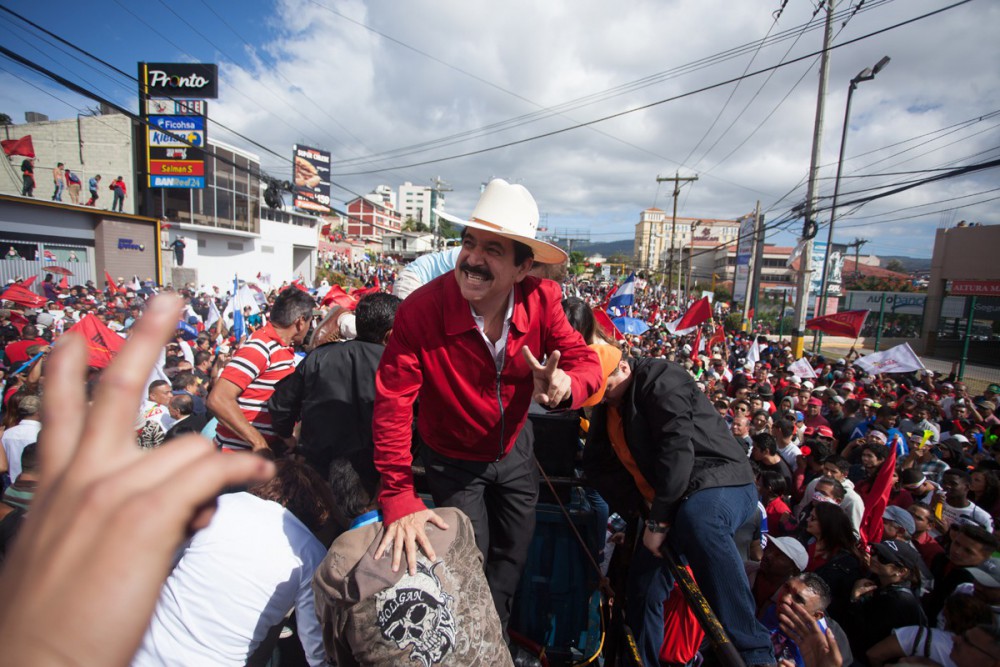
The Canadian government, led at the time by Stephen Harper, did condemn the coup, but it maintained its military training aid program in the country.
“Canada has remained a steadfast ally to the [post-coup] regime,” Tyler Shipley, professor at Humber College and author of the book Ottawa and Empire: Canada and the Military Coup in Honduras, says. “Canada helped the coup government consolidate its power, and worked diplomatically to reintegrate the country into the OAS after they were kicked out of the organization. Canada was also one of the first to recognize the election in 2009 after the coup.”
Canada supported the first election following the coup, which saw Porfirio Lobo Sosa and the far-right Partido Nacional come to power in 2009, in spite of accusations of fraud. Following the win, the party protected its power by expanding its military presence across the country, and beginning a campaign of violence against social movements and journalists. Today, Honduras is widely considered to be one of the most dangerous countries to be an environmental activist, with over 120 activists assassinated since the coup, including Cáceres in 2016.
“Canada has remained a steadfast ally to the [post-coup] regime.”
As the campaign of repression and intimidation against social movements began, the administration quickly established a pro-business model, which found favour in the Global North. The government marketed a country that was “open for business,” and welcomed investments from foreign capital, including from Canada, to expand its mining and tourism projects. The country’s plan also included the privatization of major infrastructure, including highways, as well as the establishment of private cities called “charter cities” or “model cities,” in which companies could invest independent of state regulation. This project was declared unconstitutional in 2012, but revealed the government’s commitment to deregulation.
By the 2013 election, the opposition had mobilized in order to challenge the supporters of the coup, but amid allegations of electoral fraud, Partido Nacional, headed by Juan Orlando Hernández, was elected. The president has pursued and expanded business-friendly policies, including rebranding the model cities as “Zones for Employment and Economic Development” (ZEDES). During his time, the military’s presence has further expanded.
When Orlando Hernández sought a second consecutive term, he opted to go directly to the courts, which he had previously stacked with a sympathetic judiciary. In 2016, the country’s Supreme Court issued a decision that opened the door to a second term, angering many Hondurans; one taxi driver in Honduras’ second largest city, San Pedro Sula, told me in December, “No one in the country wants [Orlando Hernández]. He stole the election, and now the people have risen up against him.”
“The state no longer functions for the interests or the necessities of the population of Honduras,” Zúñiga Cáceres says. “[The state] responds to the interests of the capitalist countries, such as Canada, which has among the highest investments in mining. [It] serves them.”
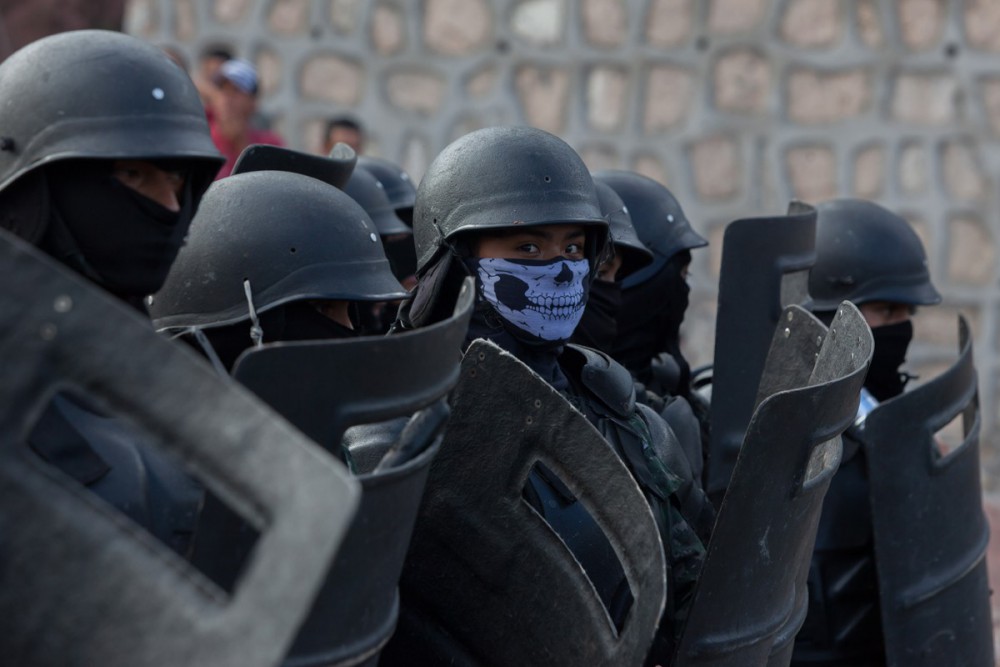
Canada’s foreign policy toward Honduras has mirrored the imperialist project of the U.S. over the past two decades. As Todd Gordon and Jeffery R. Webber point out in their paper “Canadian Geopolitics in Post-Coup Honduras,” Canada has focused on promoting Canadian capital in the country and creating a political situation that is favourable to the interests of Canadian investors.
Such favourable conditions for Canadian capital following the coup were cemented in the 2013 Canada-Honduras Free Trade Agreement, which guarantees market access for Canadian companies and provides mechanisms to protect investments.
But the political crisis in Honduras reflects a broader trend across the region. According to Raúl Zibechi, a social-movement analyst from Uruguay, this is a crisis of democracy relevant around the world. He suggests that the support of Global North countries like Canada for far right-wing administrations benefits the economic policies and geopolitical goals of those Northern countries. Simply put, undemocratic electoral processes in the Global South guarantee that wealth continues to return to the major economic hubs of the Global North.
“[The economically powerful countries] impose a type of government and a type of system that is completely anti-democratic,” says Zibechi. “These elections serve to mask and cover the colonial, or neocolonial, relations that are carried by the big mining companies and giant companies in the small countries of Central America.”
He adds, “Electoral democracy in the world no longer represents the necessities, the feelings, and the political will of the people. The policies that come from the Northern countries [the U.S. and Canada] play an important part in facilitating the neocolonization of the region.”
The neocolonization of Honduras
By acknowledging Orlando Hernández’s victory, the Canadian government benefits from having an ally who will protect the interests of Canadian capital in the mining, tourism, and maquila (manufacturing) sectors. In 2016, Canadian direct investments in Honduras was a hefty $293 million.
“It is clear that the goal of the coup was not to remove Manuel Zelaya, but rather to put Honduras at the services of certain economic interests,” Zúñiga Cáceres tells me. “This ‘modernization’ of the institutionality has also had the characteristic of being authoritarian over the functions of the state. This has resulted in great repression and giving more power to the armed forces, like what occurred in the 1980s.”
As president, Zelaya had signalled that he would prioritize regulation over unfettered development. His government had declined to issue any new mining permits and was pursuing a reform of the country’s mining laws that would have prohibited open-pit mining operations and banned dangerous chemicals such as cyanide in mining production.
“It is clear that the goal of the coup was not to remove Manuel Zelaya, but rather to put Honduras at the services of certain economic interests.”
The coup guaranteed that these proposed reforms would not reach debate in Congress. Rather, the post-coup regime brought in a new reform supported by the Canadian government and the Canadian mining sector, the latter having expanded, if modestly, in Honduras since 2009. Shortly after the coup, the Lobo administration issued new concessions for mining activities, including to Vancouver-based mining giant Goldcorp.
Honduras sits in the middle of a geologically active region and is rich in natural resources. Investments in tourism and extractive industries such as mining and hydropower impact nearly every corner of the country.
These investments are painted as bringing development to the region, but the corollary has been environmental contamination and poverty as a result of the dispossession of arable lands. It is the continuation of a colonial relationship in which the riches produced in the colonized lands are sent to colonial powers and the Indigenous populations are left with the externalities.
Among the most visible groups working to defend the environment and protect Indigenous territories, the water, and livelihoods is COPINH, which Berta Cáceres helped found in 1993.
Since 1993, COPINH has tried to protect the Lenca territory in western Honduras from the expansion of mining and hydroelectric projects. The construction of the Agua Zarca dam spurred major opposition led by Cáceres and the Indigenous Lenca communities. They argued that they had not been consulted prior to the construction of the project, in accordance with the International Labour Organization’s Convention 169 on the rights of Indigenous and tribal peoples, which states that Indigenous communities have the right to prior consultation on projects that affect their territory.
It is the continuation of a colonial relationship in which the riches produced in the colonized lands are sent to colonial powers and the Indigenous populations are left with the externalities.
The post-coup Honduran state has responded to the mobilization of communities with systematic repression and targeted assassination, including the 2016 assassination of Cáceres, in order to protect foreign investment. The acknowledgment of the regime by Canada and the international community signals tacit acceptance of the ongoing corruption and violence of the post-coup governments.
“It reaffirms authoritarianism,” said Zúñiga Cáceres. “And it reaffirms the violations of human rights, and it reaffirms that today we are going to see much greater repression.”
She points to the fact that the military has gained more power since the coup. Orlando Hernández established the military police in 2013, which report directly to the security minister but, as activists see it, have a strong allegiance to the president. Through all of this, the administration continues to find diplomatic support for its intensifying dictatorship.
“It is in Canada’s interest to have a repressive government in Honduras, and it always has been,” Shipley says, “because if there is a repressive government that is willing to crack down on people, then you can rest assured that if an Indigenous group blocks a highway in protest of a mine, the state will crack down on them.”
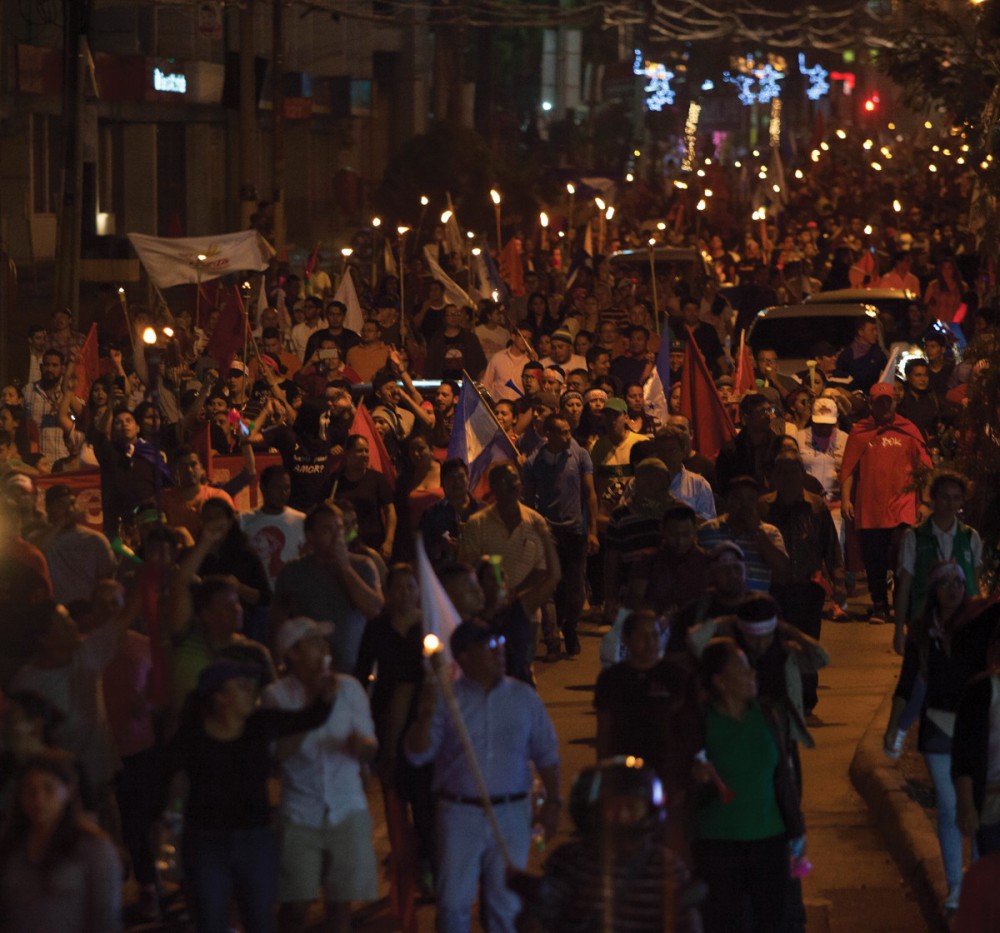
He adds, “This is the new Canada, and this is what Canada is all about now.”
In spite of the international acknowledgement of Orlando Hernández’s second term, the Honduran population does not accept him as president. He is viewed as illegitimate, and activists such as Zúñiga Cáceres pledge that they will continue to struggle against his rule.
“Juan Orlando Hernández, as a figure, is very debilitated,” Zúñiga Cáceres says. “He can be recognized by the entire international community, but for the Honduran people, they do not recognize him. This is going to be four years of a lot of instability.”


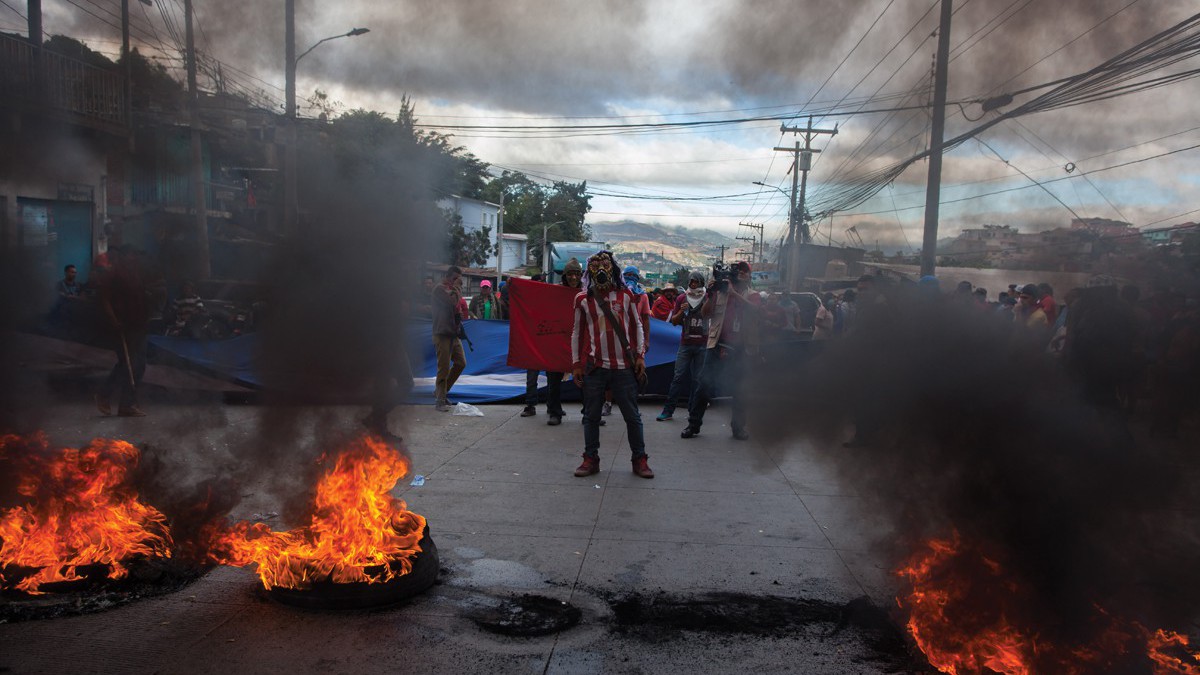
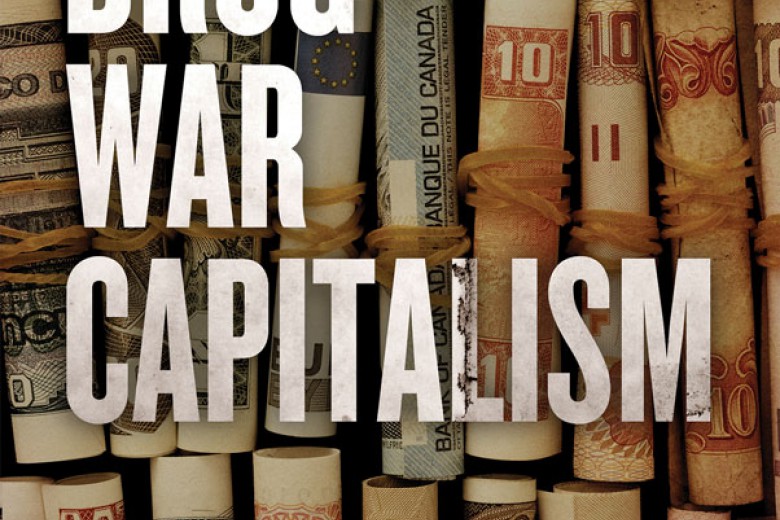
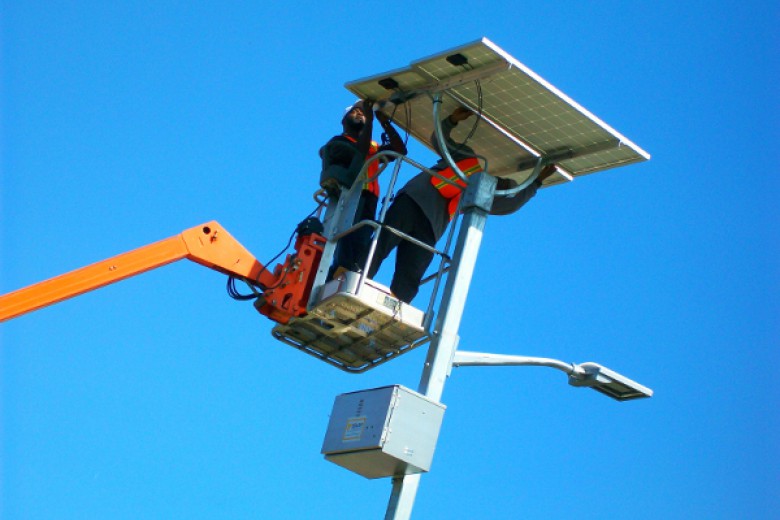
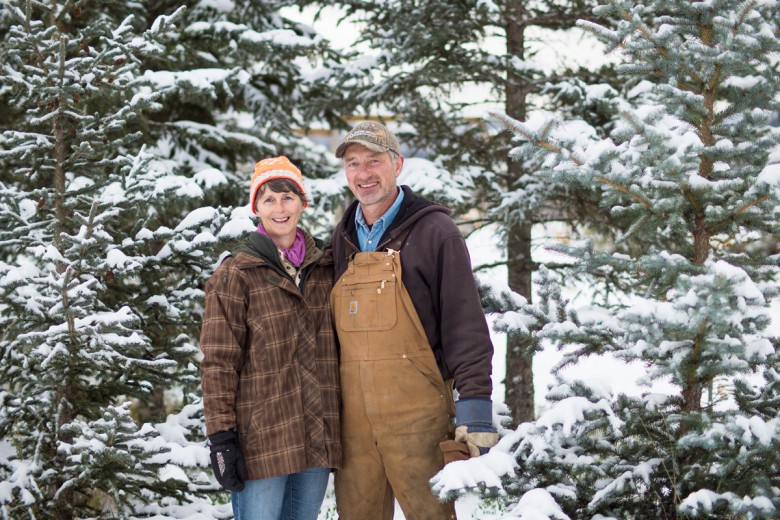
_780_520_90_s_c1.jpg)
